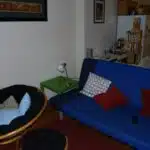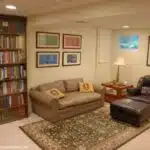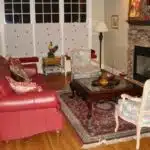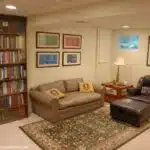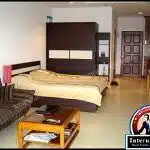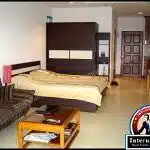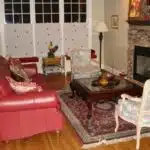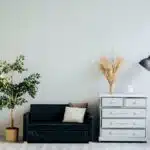As an interior design expert, it is essential to create a space that feels special and unique. However, this can become challenging when working with spaces that are small, cramped, or have limited natural light. The good news is that with the right techniques and expertise, it is possible to transform any space into something truly special.
In this article, we will explore five easy tips that will help you make any space feel special, regardless of its size or limitations. From choosing the right color scheme to incorporating natural elements and textures, these tips are designed to give your space a sense of warmth and personality while also creating a welcoming environment for your guests. So whether you’re looking to spruce up your home or create a memorable experience for your clients in a commercial setting, read on to discover our expert advice for making any space feel special.
Assessing Your Space
They say that every space can be transformed into something special if you put your mind to it. Before jumping into the fun part of decorating, however, it’s important to assess your space and determine its strengths and weaknesses. Think of it as a blank canvas waiting for your creative touch.
The first step in assessing your space is measuring it. This includes taking note of the dimensions, ceiling height, and any architectural features that may affect the room layout. It’s also important to consider how you will be using the space – will it be a place for relaxation or entertainment? Knowing this will help you decide on what furniture and accessories to incorporate.
Next, take a closer look at the room layout. Consider the flow of traffic and whether there are any areas that feel cramped or underutilized. Don’t be afraid to experiment with different furniture arrangements until you find one that maximizes space and enhances functionality. With careful planning and attention to detail, even the smallest of spaces can become a haven of comfort and style.
Transitioning into the next section about maximizing natural light: With these considerations in mind, let’s now turn our attention to one element that can instantly transform any space – natural light.
Maximizing Natural Light
One of the easiest ways to make a space feel special is by maximizing natural light. Not only does natural light make a room feel brighter and more inviting, but it can also have a positive impact on mood and overall well-being. To maximize natural light in a space, it is important to consider window treatments and light fixtures.
When it comes to window treatments, it is best to choose options that allow for maximum sunlight to enter the room. This means avoiding heavy drapes or curtains that completely block out the sun. Instead, opt for sheer curtains or blinds that can be easily adjusted to control the amount of light entering the room. It’s also important to keep windows clean and free of obstructions such as furniture or decor.
Light fixtures are another important consideration when trying to maximize natural light. It’s important to choose fixtures that are not only functional but also enhance the natural light in the space. Opt for fixtures with white or clear shades that allow for maximum brightness. Additionally, consider adding mirrors or other reflective surfaces near windows to help bounce natural light around the room.
By focusing on window treatments and light fixtures, you can easily maximize natural light in any space. The result will be a bright and inviting atmosphere that feels special and welcoming.
With natural lighting taken care of, choosing the right color scheme is crucial in creating a cohesive and visually appealing space.
Choosing The Right Color Scheme
There’s a popular theory in interior design that color can affect our mood and behavior. This theory is called color psychology, and it suggests that each color has its own unique impact on our emotions, thoughts, and actions. For example, blue is often associated with feelings of calmness and relaxation, while red is known to stimulate energy and passion. By understanding the principles of color psychology, you can choose a color scheme that will help you achieve the desired atmosphere for your space.
When it comes to choosing the right color scheme for your space, there are several techniques you can use to ensure everything looks cohesive and visually appealing. One popular method is monochromatic coordination, which involves selecting different shades of the same color to create a subtle yet sophisticated look. Another technique is complementary coordination, which pairs colors that are opposite each other on the color wheel to create a bold and dramatic effect. Analogous coordination involves selecting colors that are next to each other on the wheel for a harmonious and relaxing vibe.
Color coordination techniques can be applied not only to walls but also to furniture, decor items, and even lighting fixtures. When designing a space with colors in mind, it’s essential to consider how everything will work together as a whole. With these techniques in mind, you’ll be able to create an aesthetically pleasing environment that complements your personal style while also achieving your desired ambiance.
As important as choosing the right colors is incorporating textures and patterns into your space. These elements add depth and interest while also breaking up monotony in your design scheme. In the next section, we’ll explore some tips for incorporating textures and patterns into your home decor without overwhelming your space or creating visual clutter.
Incorporating Textures And Patterns
One of the most effective ways to make a space feel special is by incorporating different textures and patterns into the design. Mixing textures can add depth and interest to a room, creating a cozy and inviting atmosphere. For example, pairing a plush velvet sofa with a sleek metal coffee table can create an intriguing contrast that draws the eye.
Pattern combinations can also be used to great effect in interior design. When working with patterns, it’s important to strike the right balance between too much and not enough. A good rule of thumb is to use one large-scale pattern paired with one or two smaller patterns in complementary colors. This creates visual interest without overwhelming the senses.
When mixing textures and patterns, it’s important to consider the overall aesthetic you’re trying to achieve. If you want a cozy, rustic look, consider incorporating natural materials like wood and wool into your design scheme. For a more modern look, try pairing sleek metallics with bold geometric patterns.
Incorporating textures and patterns into your interior design is an easy way to make any space feel special and unique. By mixing different elements in complementary ways, you can create a cohesive design scheme that adds depth and interest to any room. In the next section, we’ll explore how adding greenery and natural elements can further enhance your space.
Adding Greenery And Natural Elements
Incorporating textures and patterns into a space can truly elevate its aesthetic. However, adding greenery and natural elements can further enhance the overall ambiance of a room, making it feel welcoming and serene. Indoor gardening is becoming increasingly popular due to its numerous benefits – not only does it improve air quality but it also reduces stress levels and boosts one’s mood.
One way to incorporate greenery into your home is through DIY planters. These can be made from upcycling materials such as mason jars or old tin cans, or even from repurposing furniture like wooden crates. Not only is this an eco-friendly option, but it also adds a personal touch to your space. Additionally, using plants as decor allows you to play with different colors and textures, creating visual interest in any room.
Another benefit of incorporating natural elements into your home is the concept of biophilic design. This approach emphasizes the importance of connecting with nature indoors by bringing in organic materials such as wood, stone, and water features. These elements not only add to the aesthetic appeal of a space but also have tangible health benefits such as reducing stress levels and improving cognitive function. Furthermore, plants act as natural air purifiers by absorbing pollutants in the air, making them a practical addition to any home.
Incorporating greenery and natural elements into your home can transform any space into a calming oasis. Whether through DIY planters or biophilic design principles, there are plenty of ways to add these touches without breaking the bank. So why not bring some nature indoors? It’s sure to make your house feel like a home. In the next section, we’ll explore another aspect of interior design: playing with scale and proportion for maximum impact.
Playing With Scale And Proportion
Scaling furniture and maintaining proportion in decor are important aspects of designing a space that feels special. When it comes to furniture, consider the size of your room and choose pieces that fit comfortably within it. Oversized furniture can make a small room feel cramped, while undersized furniture can leave a large room feeling empty. Additionally, think about the scale of each individual piece in relation to the others in the room. A well-proportioned space will have furniture that complements each other rather than competing for attention.
Proportion in decor is about creating balance between different elements in a room. This includes the size and placement of artwork, lighting fixtures, and decorative objects. When hanging artwork or choosing lighting fixtures, think about how they relate to other items in the space. For example, if you have high ceilings, consider a larger chandelier to fill the space appropriately. Similarly, when arranging decorative objects on a coffee table or bookshelf, aim for balance between larger statement pieces and smaller complementary ones.
By taking care with scaling furniture and maintaining proportion in decor, you can create a visually stunning space that feels both comfortable and cohesive. In the next section, we’ll explore how to create focal points within a room to further enhance its specialness. Whether it’s highlighting an architectural feature or drawing attention to a particular piece of artwork or furniture, creating a strong focal point can take your design to the next level.
Creating Focal Points
Designing with color is an effective way to create focal points in a space. When used strategically, color can draw the eye to particular parts of the room and make a statement. Rearranging furniture can also be used to create a focal point. By grouping pieces in a particular way, the furniture can form a focal point and draw attention to a certain area of the room. Accessorizing with artwork can also be used to create a focal point. Carefully chosen artwork can be a great way to add visual interest to a space and add a unique touch.
Designing With Color
Designing with color is an essential aspect of creating a focal point in any space. Color psychology plays a significant role in eliciting emotions and setting the mood of a room. Certain colors like red and orange create warmth, while blues and greens can evoke calmness and tranquility. Therefore, it’s crucial to choose colors that resonate with the specific mood you want to create in your space.
Color blocking techniques are also an effective way to add interest and depth to your focal point. This technique involves using contrasting colors or shades to highlight specific areas of your room. For instance, if you have a neutral wall color, consider adding bold-colored furniture or décor to make it stand out. Additionally, using complementary colors can create balance and harmony in your space.
When designing with color, it’s important to remember that less is sometimes more. You don’t want to overwhelm your space with too many bright or contrasting hues as this can be distracting. Instead, try incorporating pops of color here and there by adding accent pieces like pillows, rugs, or artwork. This will enhance the overall look of your focal point without being too overpowering.
In conclusion, designing with color is an excellent way to create a focal point in any space. By understanding color psychology and utilizing color blocking techniques effectively, you can achieve the desired mood and atmosphere for your home decor. Remember that balance is key when incorporating color into your design scheme – use it strategically to elevate the look and feel of your space.
Rearranging Furniture
Another way to create a focal point in any space is through the strategic placement of furniture. Furniture placement can impact the overall look and feel of a room, as well as its functionality. As an interior design expert, I often recommend rearranging furniture to improve room flow and create a more inviting atmosphere.
When rearranging furniture to create a focal point, consider the purpose of the room and how you want it to function. For example, in a living room, the focal point is typically the seating area. Arrange your furniture so that it faces the center of the room or a notable feature such as a fireplace or window. This will draw attention to that area and make it stand out.
To achieve balance in your furniture arrangement, be mindful of scale and proportion. Use pieces that are appropriately sized for your space and avoid overcrowding. Create visual interest by incorporating different textures and materials into your design scheme. By utilizing these techniques, you can effectively create a focal point through furniture placement alone.
Accessorizing With Artwork
As an interior design expert, I have found that one of the most effective ways to create a focal point in any space is through the use of artwork. Artwork can be a powerful tool to draw the eye and add visual interest, as well as express personal style and taste. When accessorizing with artwork, it is important to consider its placement, size, and framing options. Mixing styles and textures can also add depth and complexity to your design scheme.
When choosing artwork for a room, consider its purpose and how it will contribute to the overall aesthetic. For example, a large statement piece may serve as the focal point of a dining room or living area, while smaller pieces can complement other design elements. The size of an artwork should be appropriate for the space it occupies – too large or too small could throw off balance.
Framing options are another important consideration when accessorizing with artwork. Frames can enhance or detract from an artwork’s impact on a room. Choosing frames that match your decor style can help tie everything together, but mixing frame styles can also add visual interest. Ultimately, the goal is to create a cohesive look that draws attention to your chosen focal point while also contributing to the overall atmosphere of the room.
Using Mirrors And Reflective Surfaces
Creating a focal point is an excellent way to make a space feel special, but sometimes it’s not enough. If you’re struggling to achieve the desired effect, consider using mirrors and reflective surfaces strategically. Some people may hesitate to use mirrors out of concern that they will make space look too small or cluttered, but when used correctly, mirrors can enhance the room’s overall appearance.
Mirror placement is key when trying to create an illusion of more space in a room. Hang large mirrors on one wall or position them behind furniture to open up the room and reflect light. You can also use smaller decorative mirrors to add depth and interest to a plain wall or corner. Another option is mirrored furniture such as dressers or side tables that can help bounce light around the room and add some glamour.
Reflective decor options are another way to make your space feel special. Metallic accents like silver vases or gold picture frames can add warmth and shine to a room. Glass pieces like bowls or sculptures can also catch light and refract it beautifully throughout the space. Consider adding reflective tiles in your kitchen backsplash for an unexpected pop of interest.
Incorporating mirrors and reflective decor into your design plan can take your space from good to great with minimal effort. By using these elements strategically, you’ll not only enhance the aesthetic appeal of your home but also create an inviting atmosphere that will leave guests feeling welcome and relaxed. In the next section, we’ll discuss how enhancing lighting can further elevate your interior design game.
Enhancing Lighting
Lighting is an important aspect of any interior space, as it can affect the overall ambiance and mood of a room. When enhancing lighting in a space, it’s important to consider both the type of lighting fixtures used and their placement. The right combination of lighting fixtures and placement can create a comfortable and inviting atmosphere.
When selecting lighting fixtures for a space, consider the purpose of the room. For example, if it’s a bedroom, you may want to incorporate softer, less harsh lighting to create a relaxing atmosphere. In contrast, if it’s a kitchen or workspace, brighter and more focused lighting may be necessary. Additionally, consider the style of the space when selecting fixtures – modern spaces may incorporate sleek and minimalistic fixtures while traditional spaces may use more ornate pieces.
Once you’ve selected your lighting fixtures, think about their placement in the room. Lighting should be positioned in areas where it will provide sufficient illumination for tasks or activities that take place in the space. This could mean overhead lighting for general illumination or task-specific lighting such as under-cabinet lights in kitchens or reading lamps in bedrooms.
Enhancing lighting through the use of appropriate fixtures and placement is an effective way to make any interior space feel more special. By considering the purpose and style of each room before selecting light fixtures, you can create an inviting atmosphere that suits your needs. In the next section, we’ll discuss how to select furniture and decor to further enhance your space without overwhelming it with clutter.
Selecting The Right Furniture And Decor
When it comes to selecting the right furniture and decor, there are a few key things to keep in mind. First and foremost, consider mixing styles to create a unique and personalized look. Don’t be afraid to combine modern pieces with vintage finds or mix and match different textures and patterns. This will give your space character and make it feel more inviting.
Another important factor to consider is budget-friendly options. You don’t need to spend a fortune to create a beautiful space. Look for sales, thrift stores, and online marketplaces for affordable pieces that fit your style. Additionally, consider DIY projects such as painting old furniture or creating your own artwork to add a personal touch without breaking the bank.
Overall, selecting the right furniture and decor is all about finding pieces that reflect your personality and style while also being functional and comfortable. Mixing styles and incorporating budget-friendly options can help you achieve this goal without sacrificing quality or aesthetics. In the next section, we’ll discuss how to personalize your space even further by adding meaningful touches that truly make it feel like home.
Personalizing Your Space
After selecting the right furniture and decor for your space, it’s time to take things up a notch by personalizing it. One way to do this is by incorporating different decorating styles into your design. This can be achieved through the use of colors, patterns, textures, and materials that reflect your personality and style.
Another way to add a personal touch to your space is by taking on DIY projects. These projects not only help you save money but also allow you to create unique pieces that are one-of-a-kind. You can make anything from wall art to furniture, and the possibilities are endless. DIY projects are also a great way to get creative and have fun while decorating your space.
Incorporating art and accessories is an excellent way to add character and personality to your space. Artwork can range from paintings, photographs, sculptures, or even vintage posters. Accessories such as throw pillows, rugs, lamps, vases, and decorative objects can also enhance the overall look of your room. When selecting art and accessories for your space, choose items that complement each other in color or theme to create a cohesive look.
Incorporating Art And Accessories
When it comes to making a space feel special, incorporating art and accessories can make all the difference. Mixing styles is a great way to add interest and depth to a room. It’s important to strike a balance between different aesthetics, so that the overall look is cohesive rather than chaotic. For example, you could pair modern art with vintage accessories or traditional furniture with contemporary artwork.
DIY art projects are another way to inject personality into a space. Not only are they budget-friendly, but they’re also a great way to showcase your creativity and individuality. From paintings and sculptures to wall hangings and textiles, there are endless possibilities for DIY art projects that can add character and charm to any room.
Incorporating art and accessories into your space is all about striking the right balance between different styles, textures, and materials. By mixing things up and experimenting with different combinations, you can create a look that’s uniquely yours. Whether you’re drawn to bold colors or muted tones, eclectic decor or minimalist design, there’s no limit to what you can achieve with the right accessories and pieces of art.
- Create a gallery wall featuring various types of art
- Mix and match patterns in throw pillows, rugs, and curtains
- Display books or souvenirs from your travels on shelves
- Use plants as natural decor elements
- Hang statement lighting fixtures as functional works of art
As we’ve seen in this section on incorporating art and accessories into your space, there are countless ways to personalize your home decor. Next up: making use of vertical space!
Making Use Of Vertical Space
Incorporating art and accessories can definitely add character to a space, but there are other ways to make a room feel special. One way is through the use of vertical gardening. This technique involves growing plants on walls or in hanging containers, adding an organic touch to any room. Not only does it bring life into space, but it also helps purify the air and can even provide fresh herbs for cooking.
Another way to maximize vertical space is by using hanging storage solutions. Shelves, baskets, and hooks can all be hung from walls or ceilings to keep clutter off the floor and free up valuable square footage. They’re especially useful in smaller spaces where every inch counts. Plus, they can also serve as decorative elements when chosen in stylish designs.
Overall, incorporating vertical gardening and hanging storage solutions into a room’s design not only adds functionality but also contributes to the overall aesthetic appeal of a space. By utilizing these techniques, you can create a unique environment that maximizes both form and function while taking advantage of previously unused areas of your home.
To take it one step further, organizing and decluttering your space goes hand-in-hand with these techniques. By streamlining your belongings and keeping everything in its place, you’ll create an atmosphere that’s both inviting and stress-free. In the next section, we’ll explore how to organize and declutter your space effectively without compromising on style or comfort.
Organizing And Decluttering
When it comes to making a space feel special, organizing and decluttering are key. A minimalist approach can go a long way in creating an inviting environment. This means that each item in the space should have a specific purpose and be chosen deliberately.
Creative storage solutions can also help to keep a space organized while adding visual interest. For example, floating shelves or built-in bookcases can provide both storage and display options. Utilizing multi-functional furniture such as ottomans with hidden storage or beds with built-in drawers can also maximize space while keeping clutter at bay.
Decluttering is not only beneficial for the physical appearance of a space, but it can also have positive effects on mental health. A tidy environment promotes calmness and reduces stress levels. By implementing these organizational strategies, you can create a functional and aesthetically pleasing space that will leave you feeling refreshed and rejuvenated.
As we move into the next section on creating a cozy ambience, remember that organization lays the foundation for any successful design project. By taking a thoughtful approach to storage solutions and decluttering, you will be able to create more room for creative expression as you work towards building an inviting and comfortable space.
Creating A Cozy Ambience
As an interior design expert, I often come across clients who want to create a cozy ambience in their living space. While some may think that achieving this requires a complete overhaul of the entire area, it can actually be accomplished with just a few simple tweaks.
Firstly, lighting choices play a huge role in creating a cozy atmosphere. Opt for warm and soft lighting options instead of bright, fluorescent lights as they tend to make spaces feel cold and uninviting. Table lamps and floor lamps are great options to create pockets of light that add depth and warmth to the room.
Secondly, furniture placement is equally important in creating a cozy space. Instead of pushing all the furniture up against the walls, try creating smaller seating areas within the room by placing chairs or sofas facing each other around a coffee table or rug. This creates an intimate setting that encourages conversation and relaxation.
By taking these small steps such as choosing warm lighting options and rearranging furniture, you can transform your living space into a cozy retreat that welcomes you home every day. Remember that creating an inviting atmosphere is all about paying attention to small details and making intentional choices when it comes to decor.
Conclusion
As interior design experts, we understand the importance of creating a space that feels special and personalized. Whether it be a small apartment or a large home, there are easy tips that can be implemented to transform any space into an inviting and cozy sanctuary.
Assessing your space is the first step in creating a personalized atmosphere. Consider the natural light, color scheme, textures, patterns and vertical spaces available. By maximizing natural light, choosing the right color scheme, incorporating textures and patterns, adding greenery and natural elements, and organizing and decluttering your space – you can create a cozy ambience that feels special.
Incorporating art and accessories is another way to express your personal style. Vertical spaces provide an opportunity to display unique artwork or photographs that reflect your personality. When it comes to creating a special atmosphere – every detail counts. Follow these expert tips to transform any space into your own personal oasis.
Image Credits
- “Brickfete SPACE! group shot” by Si-MOCs (featured)


